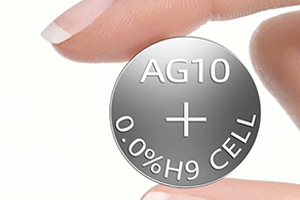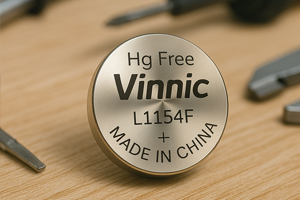Alternating Current vs. Direct Current: Key Differences, Benefits, and Modern Applications
Author:admin Date: 2025-07-31 09:50 Views:384
We need electricity to run many devices. This includes the laptop or phone you are reading this guide from. There are two main types of electrical current that make this possible. They include alternating current and direct current.
We would like you to understand alternating current vs direct current so that you can know where and when each type is applied. This is what this guide is all about. Let us dive into fully understanding each type and the main differences.
What Is Alternating Current (AC)?

Alternating current is where the electrical current periodically reverses direction. When the flow of charge keeps changing direction at regular intervals, you end up with a sinusoidal waveform that oscillates between positive and negative values. This cyclical change in direction defines the main characteristic of AC.
Sources of AC
There are a couple of sources of AC that you already know. Such include generators or alternators, power plants, inverters, and more.
Generators are the most common source of AC power. They use the electromagnetic induction process to generate electricity. This is where a rotating magnetic field induces voltage in a coil of wire, which leads to alternating current.
Power plants such as hydroelectric, thermal, and nuclear power plants utilize generators as well to produce AC power.
Inverters produce AC power by simply converting DC power into AC power. DC power is the power stored in batteries or generated by solar panels.
Wind turbines also generate AC power by the rotating turbine blades which are connected to a generator.
Applications of AC
AC power is extremely versatile in terms of where it can be used. This is mostly because of how it works. Some of the common applications for AC include:
- Power transmission and distribution over long distances. This is because it can be stepped up to high voltages for transmission and stepped down to lower voltages for distribution and use.
- Household appliances mostly need AC power to operate. Examples include refrigerators, washing machines, and electric ovens.
- Industrial equipment such as AC motors, are used in industrial setups because of their efficiency and ease of control.
- Lighting your house or a commercial space needs the use of AC power.
What Is Direct Current (DC)?
Still on direct current vs alternating current, we now focus on direct current to see the difference.

In this case, electrical current flows in one direction, unlike in AC, where it periodically changes.
DC is also characterized by having a consistent voltage level, unlike AC, which tends to fluctuate. This stability is important for powering sensitive electronic components.
Also, direct current has constant polarity, which is positive or negative. This polarity remains constant in a DC circuit.
Sources of DC
Several options qualify as a source of DC power. The most common is a battery, which can be rechargeable or non-rechargeable.
Solar cells are also a good source of DC. They work by converting sunlight into DC electricity.
You can also get DC generators, which work by converting mechanical energy into DC electricity.
Applications of DC
Several electronics use DC power to work. Examples include laptops, TVs, smartphones, and many others. They use DC power internally, even if they have to be connected to an AC power source.
Electric vehicles, scooters, and similar modes of transport need DC power to propel their electric motors and other systems.
DC power could run electronics in low-voltage applications, such as charging batteries or powering small appliances.
Alternating Current vs. Direct Current: Key Differences
Below is a table outlining the key differences between alternating and direct currents.
| Feature | Alternating Current (AC) | Direct Current (DC) |
|---|---|---|
| Current Flow | Reverses direction periodically | Flows in one direction |
| Voltage | Changes in magnitude over time | Tends to remain constant |
| Frequency | Comes with a frequency, for example, 50Hz | Has zero frequency |
| Transmission | Easy to transmit over long distances | Losses power over long distances |
| Generation | Rotating generators, inverters | Fuel cells, batteries, rectifiers |
| Examples | Power grids, electric motors, household electricity | Batteries, solar cells, some industrial applications |
| Typical voltage range | 120V, 220V | Nothing standard, varies a lot, but lower than AC |
| Power factor | Varies and less than 1 | Typically around 1 for resistive circuits |
Conversion Between AC and DC
Converting alternating current to direct current and vice versa makes power more useful in certain applications.
AC to DC Conversion
In this case, you will need a rectifier to convert AC to DC power. A rectifier uses a set of diodes that allow current to flow only in one direction. Options include half-wave and full-wave rectifiers.
A half-wave rectifier uses a single diode that only allows half of the AC waveform to pass through. The result is a pulsating DC output.
A full-wave rectifier uses multiple diodes, arranged in a bridge configuration. In this case, both halves of the AC waveform are rectified, leading to a smoother DC output.
A capacitor may be added to the output of the pulsating DC to create a more stable DC voltage. Depending on the use, this is optional.
Converting DC to AC
This process is referred to as inversion. You will need an inverter for this part. The inverter is a device that converts the DC input into a series of pulses which mimic alternating current.
Inverters use switching components such as transistors or thyristors to rapidly switch DC current on and off. This is what leads to an alternating waveform.
Alternating Current Vs Direct Current: Advantages And Disadvantages
Advantages of AC
- AC offers efficient transmission, especially over long distances. It is used because it has minimal energy losses and can be stepped up or down depending on the application.
- You will also get easy voltage conversions with the use of transformers. The transformers can easily change the AC voltage levels thus adapting them to different devices and applications.
- Right now, there is a widespread infrastructure that can handle AC power. Everywhere you look, there is an AC power grid thus, it becomes cost-effective to adapt the existing system to suit the needs of people in an area compared to building a DC infrastructure.
- Versatility makes AC power good for a wide range of devices. This includes household appliances, industrial machinery, and can still be converted to DC if necessary. Such adaptability makes it a versatile power source for a wide range of applications.
- You may find that AC devices are simpler and cost-effective to manufacture than their DC counterparts.
Disadvantages of AC
- AC systems may experience harmonic distortion, which affects how the equipment performs.
- AC grids are more complex to design and maintain. This is because they must handle frequency synchronization and deal with electromagnetic interference issues.
- AC power can become unstable during transmission faults, such as short circuits and voltage collapses, leading to widespread blackouts.
Advantages of Direct Current
- DC power systems are more reliable and efficient, so they are used for critical applications. This is because DC power eliminates the need for multiple conversions to make the power suitable for an application.
- DC systems have better overall power quality and stability for critical systems. They can maintain a constant voltage level and power factor crucial for their operations, unlike AC, which tends to fluctuate.
- DC power systems have simpler designs, which reduce installation and maintenance costs. The reduced complexity also means streamlined operations and improved energy efficiency.
- DC systems also integrate quite well with renewable energy systems such as solar panels and wind turbines. You would only need to convert to AC if you use it as household electricity to power various appliances.
Disadvantages of Direct Current
- Voltage conversion can be a problem. This is because transformers cannot step up or down DC power. Complex converters will be needed to get the power where it is needed, adding costs to the whole process.
- Although DC power does not experience as many losses as AC power, transmission over a long distance is also limited. It requires frequent converter stations to help maintain the required voltage levels.
- Also, the DC grids are not readily available. This means setting them up at the moment will be too costly.
Conclusion
By now, you should be able to understand direct current vs. alternating current and where best to use them. Each also has many applications; it all comes down to your needs. Always make sure you understand how a device works before buying it. Most devices will clearly indicate which power type they use. Each power type has pros and cons. Understanding them should help you decide whether to use AC or DC.
Video: Difference between AC and DC Current Explained | AddOhms #5
Please send RFQ , we will respond immediately.
Frequently Asked Questions
Why is AC power used for power transmission rather than DC?
AC is generally easier and more efficient to transmit over long distances. This is because the voltage can be stepped up or down by using transformers to reduce energy losses.
How is AC or DC converted?
If you want to convert AC to DC then you will use a rectifier which smooths the AC input into a DC output. As for DC to AC, you will use an inverter, which rapidly turns on and off the DC power to get AC power.
Are there systems that use both AC and DC power?
Yes. These are hybrid systems, such as solar panel setups, that use the DC from the panels and convert it into AC for use in the home. They may also keep it as DC for charging the battery.


